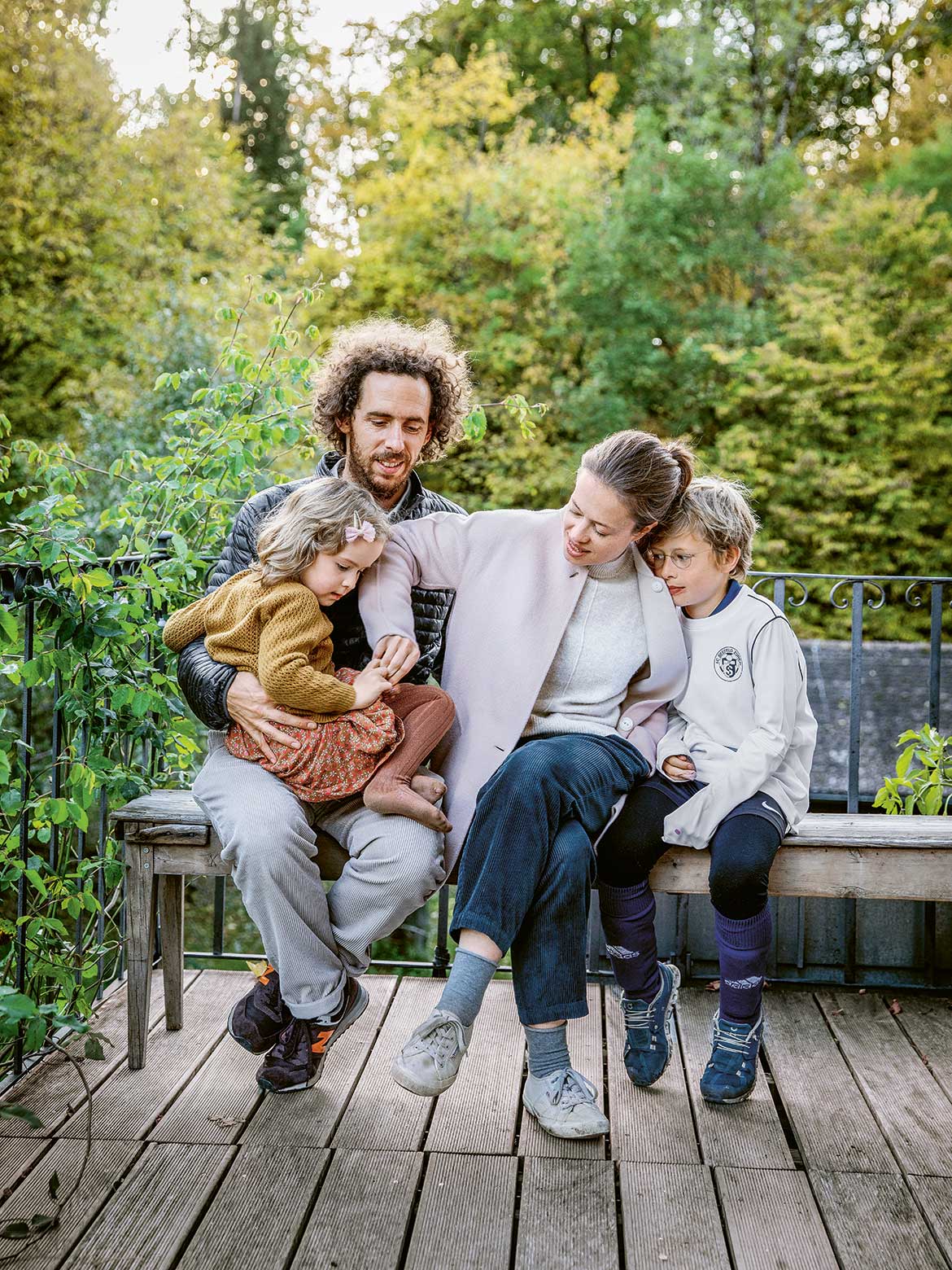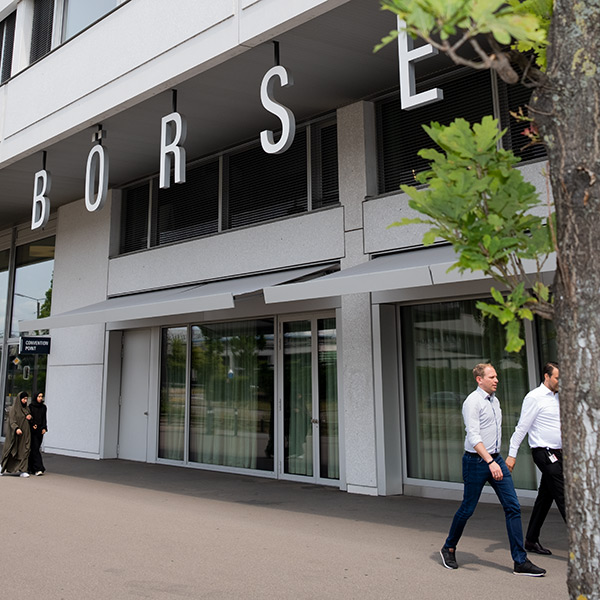Dream couples
What is the secret of a long, happy relationship? The answers offered by researchers can be as complicated as the relationships they try to describe. And yet there are a few formulas for love that science can indeed offer us.

Hunting for a formula for love, scientists subject couples to stress tests and film their dialogue afterwards. | Image: Manu Friederich
A cosy twosome, in heartfelt intimacy, preferably for a lifetime. That’s what most people still long for, despite rising divorce rates and our increasing focus on individualism. And yet in historical terms, our notion of a partnership founded in love is a relatively young phenomenon. This romantic concept only became established in the 19th century. And it took even longer for researchers to get to grips with it. Only since the 1970s have there been investigations into what keeps couples together (or drives them apart). Before then, separation was usually just not an option. People stayed together – both for economic reasons, and also because societal and religious conventions required it.
Things are different today. So it would be really practical to discover a scientifically corroborated formula for long-lasting happiness in love. But research is only of limited help. “The phase of being in love lasts roughly half a year as a rule”, says Alexander Grob, professor of personality and developmental psychology at the University of Basel. After that, people cast off their rose-coloured spectacles and look at the object of their affection in a more realistic light. “And from that moment onwards, things get incredibly complicated”. According to their circumstances and living situation, the most varied interactions can occur.
Stable emotions, happy relationships
One’s personality is an important factor. Grob has studied how the character traits of partners are linked to positive feelings in their relationship. “Emotionally stable, extrovert, conscientious and socially compatible people with a high degree of self-esteem are more satisfied in their partnerships”. Among the characteristics that are particularly powerful are those that psychologists gather together under the concept of ‘neuroticism’. People who are more emotionally unstable, tense and anxious are less happy in love, while the more stable, self-assured and calm we are, the happier we are. So have nervous, shy and introverted people been dealt the worse cards? Not according to Grob: “We are not just abandoned to the vagaries of our personality as it is. We can also change how we think and act”. Emotionally unstable people who immediately assume the worst in ambiguous situations with their partner – “he/she doesn’t love me any more!” – can become aware of their behaviour and can try to change it or improve it. “If negative interpretations become less common, emotional stability increases”. The result is that one experiences one’s relationship as being happier.
Do it like Michelangelo
Partners can grow together. Over time, people with a lower sense of self-worth become increasingly positive about themselves when they are together with a partner who is content. Furthermore, couples who support each other in order to bring out the best in themselves live especially long and happy lives together. This is the finding of the psychologist Eli Finkel and his team of researchers in the US, who call it the Michelangelo phenomenon. The famous Renaissance sculptor was of the opinion that a work of art already existed, slumbering away in every block of marble. He just had to prise it out – carefully but determinedly chiselling and polishing it to let it emerge. In the context of a partnership, this means that couples should mould and support each other so that their opposite number becomes empowered to realise their ideals and their life’s goals. The tools for this are empathy and sensitivity. Whoever brings these with them is the better ‘sculptor’ in the relationship.
It is also possible that we experience new things about ourselves. The eye of a loving partner can recognise dormant potential. But what doesn’t work, on the other hand, is trying to change one’s beloved. “If I don’t like something about my partner, I can influence only how I myself deal with it”, says Grob. In such a case, we should ask whether the issue that annoys us can be integrated, and if so, how.
Small gestures, big impact
The manner in which couples talk with each other also has a lasting impact on the fate of a relationship, says Nathalie Meuwly, a psychologist at the University of Fribourg: “Partnerships where communication is formed on understanding and good intentions are happier and more stable”. Keeping lines of communication open, listening attentively, giving praise, compliments and little gestures of appreciation and affection – all this can consolidate a partnership to a large degree, and should not be underestimated. It’s worth cultivating this consciously, despite the daily grind, says Meuwly. And for those who have thus far noticed the absence of sex in this article: caresses and eroticism are also forms of communication. Sex creates bonds without needing many words.
Positive communication does not mean saying only nice things to one’s partner. People should also broach difficult topics and express criticism. Occasional conflict doesn’t actually do any harm, so as long as it doesn’t topple over into destruction and contempt, says Meuwly. “A conflict can help to clarify positions. And it offers the opportunity for reconciliation”. In this manner, intimacy and understanding can be re-established between the partners. But we should watch out, because it all depends on getting the mixture right. Research has shown that five positive gestures offset only one negative gesture. So whoever criticises their partner once should afterwards display five signs of affection. That way, the relationship can stay balanced. So we’ve found a clear formula after all! It was drawn up by the US pioneer in relationship research John Gottman.
Stress kills relationships
According to Meuwly, there are two further factors that play an exceptional role in how partners interact. First, couples who can offer mutual support in stressful situations – such as career stress – can stabilise their partnership in the process. Secondly, solving conflicts and problems together also forges bonds. It’s clearly simpler to offer support in cases of stress at work than it is to deal with arguments involving the relationship itself. “Stress that comes from the “If both are stressed, it can get dangerous for a relationship”.
There is still a lot to study. For example, we know little about elderly or same-sex couples. But such research can help us all. For many years now, the University of Zurich has been offering a successful partnership programme entitled ‘Paarlife’, which was developed by Guy Bodenmann, a professor in clinical psychology. Love is like a little plant, he writes. It has to be tended, otherwise it wilts away.
Susanne Wenger is a freelance journalist in Bern.
R. Weidmann, Th. Ledermann, A. Grob: The Interdependence of Personality and Satisfaction in Couples. European Psychologist (2016) G. Bodenmann, N. Meuwly et al.: Effects of Stress on the Social Support Provided by Men and Women in Intimate Relationships. Psychological Science Online First (2015)
Different methods are used to carry out partnership research. Couples can be interviewed by means of questionnaires about personality, processes in their relationships and their degree of satisfaction. Some participants keep a diary. Researchers also observe couples as they communicate. For example, they might be given the task of relating something stressful from the previous day, and they are filmed doing
it. The psychologist Nathalie Meuwly from Fribourg has placed couples under stress in her university laboratory. The couples had to undergo a job interview and solve a mathematical problem, all independently of each other. Then they came together in a waiting room, where the researchers filmed what spontaneously happened. Physiological values are also measured, such as the levels of the stress hormone cortisol in saliva samples, and the heart rate.




